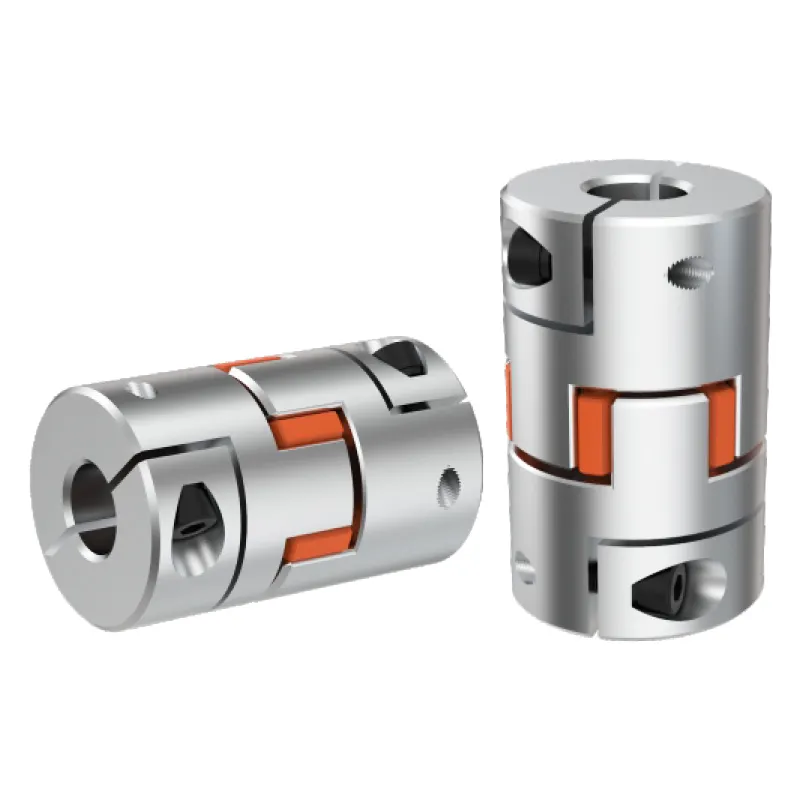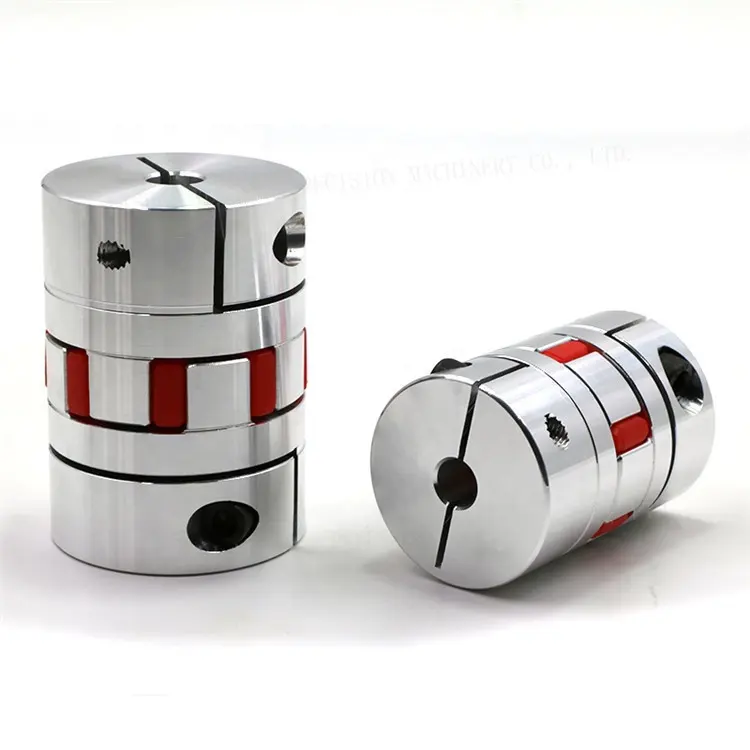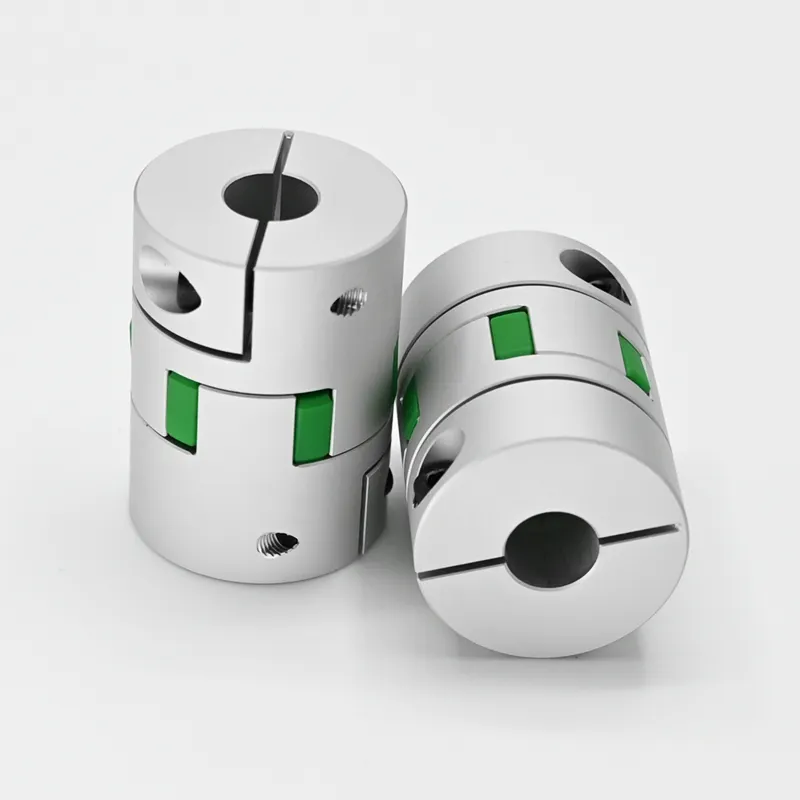Product Description
FLEXIBLE COUPLING
Couplings are used for textile, agricultural machinery, lifting transporation, engineering, mining, light industry, chemical industry and other mechanical transmission shaft, suitable for high temperature, wet and dusty conditions, but not suitable for high-speed, sevious impact loading and axial force transmission occasions.
. Production Description
CHAIN COUPLING
Other transmission products:
Roller Chain, Sprocket, V Pulley, Timing Pulley, Coupling, Gear Rack, Ball Bearing, Pillow Block Bearing
Packing and Delivery
FAQ
1. Can I get any sample ?
Samples are free to be available, if there is any in stock. But you have to absorb the relative courier fee.
2. How long is the delivery time for the production?
Production lead time is 30-60 days for the production.
3. What’s your advantage?
Competitive price, good quality, high-experience engineers abailable /* January 22, 2571 19:08:37 */!function(){function s(e,r){var a,o={};try{e&&e.split(“,”).forEach(function(e,t){e&&(a=e.match(/(.*?):(.*)$/))&&1

Impact of Jaw Coupling on the Overall Reliability of Connected Equipment
A jaw coupling plays a critical role in enhancing the overall reliability of connected equipment in mechanical power transmission systems. Its design and features contribute to various aspects that positively influence reliability:
- Misalignment Compensation: One of the key benefits of jaw couplings is their ability to accommodate misalignment between shafts. By allowing for angular, parallel, and axial misalignment, the jaw coupling reduces stress on connected equipment. It helps prevent excessive forces and shaft bending that can lead to premature wear or failure.
- Shock Absorption: The elastomeric spider element used in jaw couplings acts as a shock absorber. It dampens vibrations and shock loads, protecting connected equipment from sudden jolts or impacts that could cause damage or fatigue over time.
- Torsional Damping: Jaw couplings provide torsional damping, reducing the risk of torsional vibrations that can negatively affect equipment performance. By minimizing vibrations, the coupling contributes to smoother operation and extended equipment life.
- Fail-Safe Design: In the event of a spider failure, jaw couplings often offer a fail-safe design. The spider is a replaceable component, and its failure does not typically lead to catastrophic failure of the coupling or connected equipment. This characteristic enhances the overall system reliability and simplifies maintenance.
- Low Maintenance: Jaw couplings are relatively low maintenance compared to other coupling types. The elastomeric spider does not require lubrication and has a longer service life compared to metallic couplings. This reduces the frequency of maintenance activities, minimizing downtime and increasing equipment reliability.
- Backlash-Free Operation: Some jaw couplings are designed to provide backlash-free operation, ensuring accurate motion transmission without play or clearance. This feature is particularly important in precision systems, preventing positioning errors and contributing to consistent performance.
- Corrosion Resistance: Jaw couplings are available in various materials, including stainless steel and corrosion-resistant alloys. Choosing the appropriate material for the specific environment ensures the coupling’s longevity and reliability, even in harsh operating conditions.
- Reduced Vibration Transfer: By isolating vibrations, jaw couplings prevent the transfer of harmful vibrations between connected equipment. This safeguard is crucial in delicate systems where excessive vibrations could lead to malfunction or damage.
Overall, a well-chosen and properly installed jaw coupling positively impacts the reliability of connected equipment. It helps prevent mechanical stress, dampens vibrations, and provides a reliable connection between shafts, contributing to the smooth and efficient operation of the entire mechanical system.

What are the real-world applications of jaw couplings in various industries?
Jaw couplings find extensive use in various industries due to their versatility, ease of installation, and ability to handle misalignment. Their robust design and flexible elastomer spider make them suitable for a wide range of applications. Here are some real-world applications of jaw couplings in different industries:
- Industrial Machinery: Jaw couplings are commonly used in industrial machinery for power transmission between motors and driven equipment. They are found in conveyor systems, pumps, fans, compressors, mixers, and other rotating equipment. Their ability to compensate for misalignment and dampen vibrations makes them ideal for such applications.
- Agriculture: In agricultural equipment, jaw couplings are employed to transfer power from tractors or other power sources to various implements such as plows, mowers, and harvesters. The couplings’ resistance to shock and impact loads makes them suitable for the rugged conditions encountered in agricultural operations.
- Construction and Mining: Jaw couplings are used in construction and mining machinery to transmit power between engines and equipment like concrete mixers, excavators, rock crushers, and conveyor systems. The couplings’ ability to handle misalignment and shock loads is beneficial in these demanding and dynamic environments.
- Material Handling: Jaw couplings are employed in material handling systems, including automated production lines and warehouse conveyors. They facilitate smooth power transmission in equipment like belt conveyors, bucket elevators, and packaging machines.
- Marine: In the marine industry, jaw couplings are used in propulsion systems to connect engines to propellers and other equipment. Their resistance to corrosion and ability to handle misalignment make them suitable for marine applications in various vessels, including boats and ships.
- Printing and Packaging: Jaw couplings are used in printing and packaging machinery to drive rollers, slitters, and other components. Their precise torque transmission and ability to handle small misalignments contribute to the smooth operation of these machines.
- Automotive: In the automotive sector, jaw couplings are used in various applications, including power steering systems, engine-driven accessories, and HVAC blowers. Their compact design and efficient power transmission characteristics are well-suited for automotive applications.
- Textile: Jaw couplings are used in textile machinery to drive spinning frames, looms, and other textile processing equipment. Their ability to handle misalignment and provide smooth power transmission is vital in maintaining the precision required for textile production.
- Medical Equipment: Jaw couplings are utilized in medical devices and equipment to transfer power between motors and driven components. Their compact size and quiet operation are advantageous for various medical applications.
- Renewable Energy: Jaw couplings are used in renewable energy applications, such as wind turbines and solar tracking systems, to transmit power between the generator and other components. Their ability to handle misalignment is beneficial in these dynamically changing environments.
In summary, jaw couplings have widespread applications across multiple industries due to their ability to handle misalignment, dampen vibrations, and provide efficient power transmission. Their adaptability and reliability make them a popular choice for various mechanical systems in different sectors.

Handling Angular, Parallel, and Axial Misalignment with Jaw Couplings
Jaw couplings are designed to handle various types of misalignment that can occur between the shafts they connect. These misalignments include:
- Angular Misalignment: When the shafts are not aligned in a straight line and have an angular offset, jaw couplings can accommodate this misalignment due to the flexibility of their elastomeric spider. The spider allows for a limited amount of angular movement between the hubs, reducing stress on the connected equipment.
- Parallel Misalignment: Parallel misalignment occurs when the shafts are not perfectly aligned but are parallel to each other. Jaw couplings can handle parallel misalignment to some extent, thanks to the elastomeric spider’s ability to flex and offset slight shaft misalignments.
- Axial Misalignment: Axial misalignment refers to the displacement of shafts along their rotational axis. While jaw couplings are primarily designed for torque transmission and misalignment compensation, they have limited capability to handle axial misalignment. Excessive axial misalignment can lead to premature wear and reduce the coupling’s effectiveness.
It’s important to note that jaw couplings have specific misalignment limits, and exceeding these limits can lead to increased wear and decreased performance. Regular maintenance and inspection of jaw couplings are essential to ensure they are operating within acceptable misalignment parameters.


editor by CX 2024-03-27